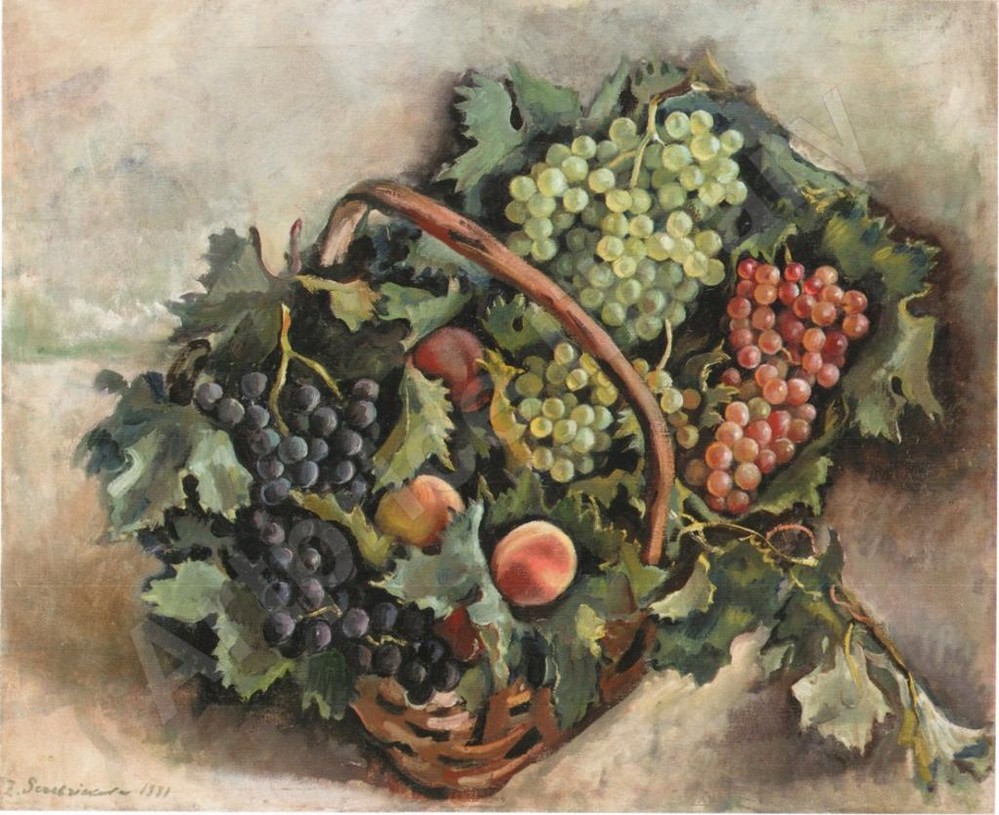
Zinaida Serebriakova
December 10, 1884 - September 19, 1967
One of Russia's most significant female painters of the early 20th century, known for her luminous portraits, intimate family scenes, and monumental depictions of peasant life
Biography
Zinaida Serebriakova (1884–1967) was born into a family where the tradition of serving art traced back to the 17th century. Her great-grandfather, Alberto Kavos, was a famous architect who designed the Mariinsky Theater in St. Petersburg and reconstructed the Bolshoi Theater in Moscow. Her grandfather, Nikolai Benois, was also an architect who designed many buildings in and around St. Petersburg. Notably, several buildings of the Peterhof Palace ensemble were built to his designs, one of which now houses the Benois Family Museum. Zinaida's father, Evgeny Lansere, was a well-known sculptor.
Surrounded by a creative artistic environment since childhood, Zinaida too began to draw and by 1909 presented herself to the public as a mature artist with her self-portrait "At the Dressing Table." In subsequent years, she created a series of remarkable works that have since become classics of Russian art: landscapes, portraits, and large compositions such as "The Bathhouse," "Harvest," and "Bleaching Cloth." She was also a happy wife and mother of four children.
The Revolution dramatically changed the artist's life. With her young children and mother, she was forced to flee their burned estate. In 1919, after a period of imprisonment, her beloved husband Boris Serebryakov died. The family lived in dire poverty. Zinaida's few commissions could not feed six people. In 1924, Alexander Benois suggested she go to Paris to hold an exhibition and earn money.
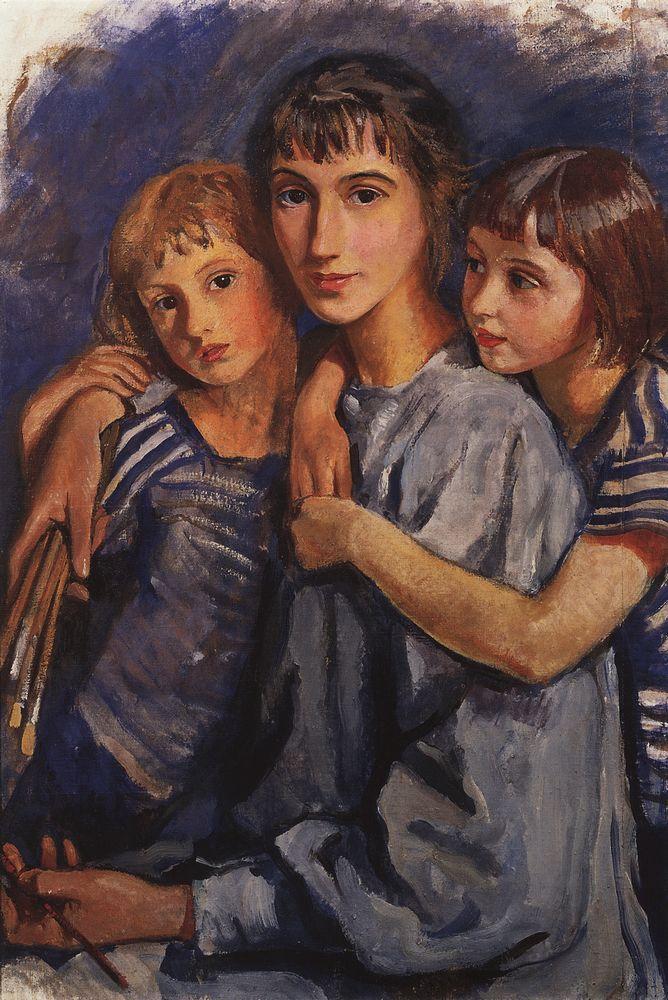
Artists of the Family
The artistic legacy spanning generations of Zinaida Serebriakova's family
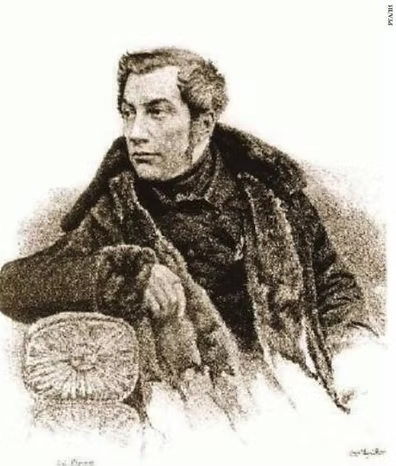
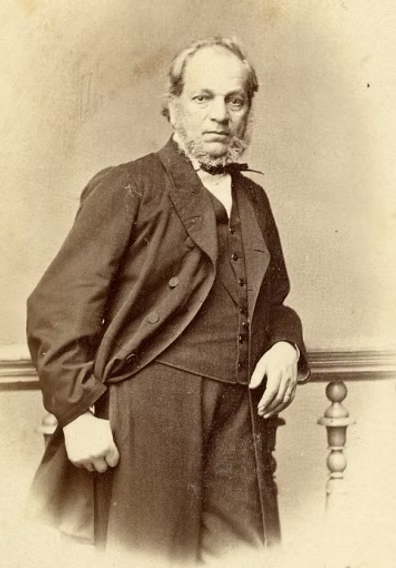

.avif)
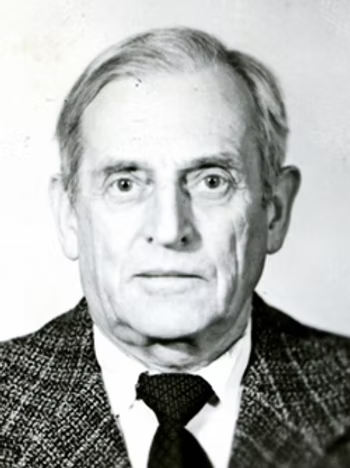
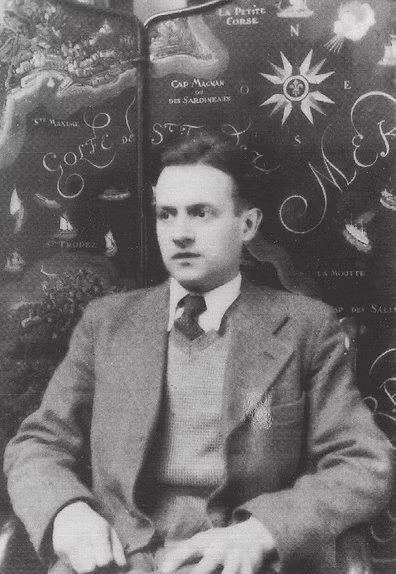
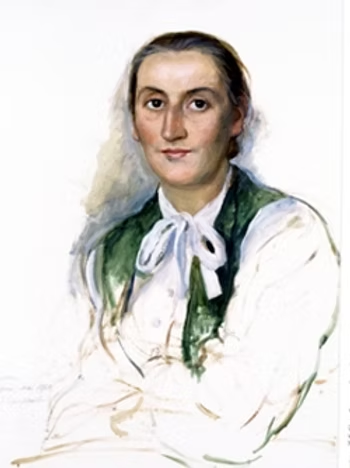
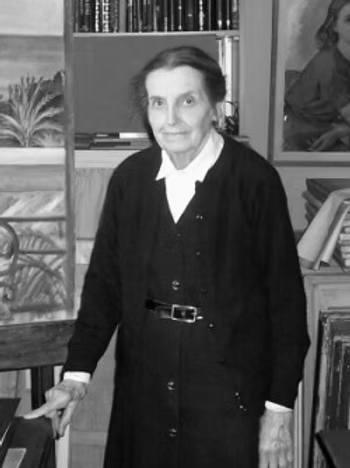
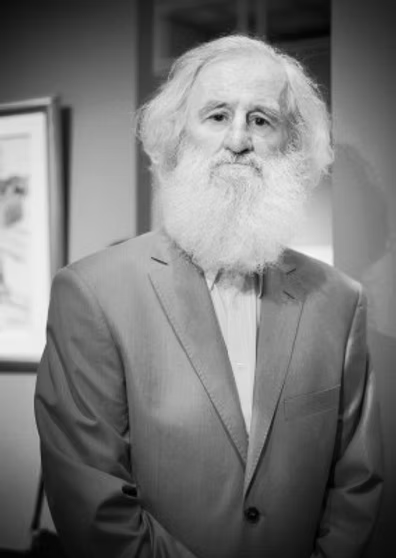
First President of the Zinaida Serebriakova Family Collection
Life Timeline
Key moments in Zinaida Serebriakova's life and artistic journey
Zinaida Evgenievna Lanceray-Serebriakova was born on December 10, 1884, on her father’s estate "Neskuchnoye" in the Belgorod District of Kursk Province (now the village of Neskuchne, Kharkiv Oblast, Ukraine). Her father was the sculptor Evgeny Alexandrovich Lansere (1848–1886), and her mother was the artist Ekaterina Nikolaevna Lansere (1850–1933, née Benois). Zinaida was the youngest child, with two brothers, Evgeny (1875–1946) and Nikolai (1879–1942), and three sisters: Sofya (1880–1964), Ekaterina (1882–1921), and Maria (1883–1962).
Zinaida’s father died at Neskuchnoye. The Lansere family moved to St. Petersburg, to the house of her grandfather, the architect Nikolai Leontievich Benois (1813–1898). The family spent summers near St. Petersburg and in Finland.
As a child, Zinaida spent every summer at Neskuchnoye.
She graduated from the Kolomna Girls’ Gymnasium in St. Petersburg.
She enrolled in Princess Maria Tenisheva’s Art School in St. Petersburg, but studied there only 25 days until the school’s closure.
From September until May 1903, she traveled with her mother and sisters for health treatment in Italy (Capri, Rome). She spent about two months in Rome.
In the summer, she worked at Neskuchnoye on portraits of peasants (the series "Types of Kursk Province"). From the autumn of 1903 until 1905 she trained in the studio of Osip Braz in St. Petersburg. She also began copying Old Master paintings in the Hermitage.
On September 9, 1905, Zinaida married Boris Anatolievich Serebryakov (1880–1919), then a student at the Institute of Civil Engineering in St. Petersburg. From November 1905 through March 1906 she lived with her mother (and from December, with her husband) in Paris. She studied drawing and watercolor at the Académie de la Grande Chaumière, upon the advice of Alexander Benois. After returning to Russia, she lived in St. Petersburg and at Neskuchnoye.
Birth of her son Evgeny (1906–1990).
Birth of her son Alexander (1907–1995).
At Neskuchnoye she created a series of significant landscapes — “Greenery in Autumn,” “Neskuchnoye: Plowing,” and views of a blooming fruit orchard.
Painted her iconic painting “At the Dressing Table” as well as “Portrait of E. M. Eïgel” and the tempera painting “Young Peasant Woman (Molodukha).”
Created portraits of O. K. Lansere, M. N. Benois, and N. G. and G. I. Chulkov. For the first time, she participated in an art exhibition — the “Exhibition of Modern Russian Women’s Portraits” at the 'Apollo' magazine editorial offices, showing early works: “Self-Portrait” (1905) and “Portrait of My Nanny” (1908). The first mentions of her in print appeared in G. K. Lukomsky’s introduction to the exhibition catalog and in Alexander Benois’ review in 'Rech' (January 24, 1910). She also took part in the VIIth exhibition of the Union of Russian Artists in St. Petersburg, where she exhibited thirteen works including “At the Dressing Table.” Alexander Benois praised her works in 'Rech' (March 13, 1910). Three of these works — “At the Dressing Table,” “Greenery in Autumn,” and “Peasant Woman” (now known as “Young Peasant Woman (Maria Zhegulina)”) — were purchased by the Tretyakov Gallery.
In the spring she traveled to the Crimea (Yalta, Gurzuf). She painted the works “Bather,” “Pierrot,” “Study of a Girl,” “Portrait of E. K. Lansere,” and the landscape “Before the Storm.” She participated in the 'Mir Iskusstva' (World of Art) exhibition in Moscow (showing the portraits of N. G. and G. I. Chulkov). She was elected a member of the 'Mir Iskusstva' art movement.
Birth of her daughter Tatyana (1912–1988). She created “Portrait of E. N. Lansere, the Artist’s Mother.” She took part in the 'Mir Iskusstva' exhibition in St. Petersburg (showing “Portrait of N. G. Chulkova,” “Pierrot,” “Bather,” “Study of a Girl”). The Russian Museum acquired “Bather” and “Study of a Girl (Self-Portrait)” from the exhibition. From autumn 1912 to autumn 1913 she lived in Tsarskoe Selo (with brief trips to the Crimea and Neskuchnoye). She painted landscapes and worked on two versions of the painting “The Bathhouse” (1912 and 1913).
Trip to the Crimea (Simeiz). Birth of her daughter Ekaterina. She painted portraits of Boris Serebryakov and E. E. Zelenkova. She exhibited with 'Mir Iskusstva' in St. Petersburg (“Portrait of E. N. Lansere,” “The Bathhouse,” “Portrait of E. E. Zelenkova”) and in Moscow (“The Bathhouse,” “Portrait of E. E. Zelenkova,” and studies of Crimea and Tsarskoe Selo).
Painted the picture “At Lunch.” In summer she traveled to Switzerland and Italy (Milan, Venice, Padua, Florence) via Berlin, Leipzig, and Munich. At the start of World War I, she sketched soldiers at train stations and hospitals. From late July, at Neskuchnoye, she worked on the painting “Harvest,” completing a first version which she later destroyed (fragments survived as “Peasants. Lunch” and “Two Peasant Girls”).
She completed the painting “Harvest.” She took part in the exhibition of studies, sketches, and drawings of 'Mir Iskusstva' in Petrograd (showing nine works, including “The Bathhouse,” 1912). She created “Portrait of E. E. Lansere in a Papakha” and “Portrait of B. A. Serebryakov” (drawing). She worked on panel sketches for the restaurant hall of Kazansky Station in Moscow: “Turkey,” “India,” “Siam,” “Japan (Odalisque)” (1915–1916).
She participated in the 'Mir Iskusstva' exhibition in Petrograd (both versions of the painting “Harvest (Peasant Women in the Field)”). She worked on sketches, studies, and drawings for the paintings “Bleaching Cloth,” “Diana and Actaeon,” and “Bathing.”
She was nominated for the title of Academician of the Academy of Arts, but the election did not take place due to the outbreak of revolutionary events. Sergei Ernst finished a monograph on Serebriakova (published in 1922). The Tretyakov Gallery acquired her drawing “Portrait of B. A. Serebryakov.” She made sketches for the composition “Sheep Shearing.” She created the painting “Sleeping Peasant Girl.” She completed the painting “Bleaching Cloth.” V. Dmitriev published an article “Women Artists” in 'Apollo' (No. 8–10, 1917) which discussed Serebriakova. Because of the revolution, the family could not leave for Petrograd in time; in December, fearing bandit raids, she moved to the town of Znamenka.
She took part in the “Russian Landscape” exhibition in Petrograd (10 works). She lived alternately in Kharkov and at Neskuchnoye (until November 1919).
In March, her husband died of typhus. At Neskuchnoye she painted the portrait “Boys in Sailor Suits.” She participated in the First Art Exhibition of the Kharkov Soviet of Workers’ Deputies in Kharkov. The Neskuchnoye estate was looted and burned.
She lived in Kharkov. Starting in January, she worked at the Archaeological Museum of the University, making drawings of archaeological finds. She created portraits of the museum staff (E. I. Finogenova, G. I. Teslenko, V. M. Dukelsky), and painted the canvases “On the Terrace in Kharkov” and “House of Cards.” In December she returned to Petrograd. She settled with her children and mother on Lakhtinskaya Street because her apartment on Vasilyevsky Island had been occupied. She took part in an exhibition of paintings by artists of the House of Arts in Petrograd.
She settled with her children and mother in her grandfather’s house (N. L. Benois’ home). She worked for the visual aids workshops of the Department of Public Education. The Society for the Encouragement of the Arts donated several of her works to the Russian Museum: “Before the Storm (Village of Neskuchnoye),” “Portrait of the Artist’s Mother E. N. Lansere,” “Beggar (Lukyan from Vesyoloye village),” and “Peasant Girl Polya.” She created “Self-Portrait in Red,” “Katya at the Kitchen Table,” “Self-Portrait with Daughters,” “Portrait of S. R. Ernst,” and “View of the Peter and Paul Fortress.” She painted commissioned portraits. She also made a series of drawings and portraits of ballerinas at the State Academic Opera and Ballet Theater (1921–1924).
She participated in the 'Mir Iskusstva' exhibition (18 paintings) in Petrograd. V. Voinov noted her works in a review “Letters from Petersburg: Mir Iskusstva Exhibition” ('Among Collectors', 1922, No. 7–8). The Aquilon publishing house released S. R. Ernst’s book 'Z. E. Serebriakova'. She created “Self-Portrait (in a White Blouse)”, and portraits of A. A. Cherkesova-Benois with her son, A. A. Akhmatova, E. I. Zolotarevsky, D. D. Bouchène, G. M. Balanchivadze (George Balanchine), as well as portraits of ballerinas L. A. Ivanova and A. L. Danilova.
She painted the works “In the Kitchen,” “Tata with Vegetables,” “Herring and Lemon,” “Ballet Dressing Room: Snowflakes,” and “Portraits of Ballerina E. N. Heidenreich.”
She participated in an exhibition of the 'Mir Iskusstva' group of artists (11 works) in Leningrad. She painted “Self-Portrait with Brush,” “Ballet Dressing Room (The 'Swan Lake' Ballet),” and portraits of M. A. Troinitskaya, Tata in a dance costume, and ballerinas E. N. Heidenreich and V. K. Ivanova. She took part in a traveling exhibition of Russian art in the USA and Canada. On August 24, she departed for France, where she would live in Paris for the rest of her life. She created portraits of Alexander Benois and S. N. Galpern-Andronikova. Her paintings were shown in the exhibition “The Peasant in Russian Painting, 18th–20th Centuries” at the Tretyakov Gallery.
Trip to London. She worked on commissioned portraits (including of the Yusupov family). Her son Alexander arrived in Paris; mother and son lived in Versailles, where she painted park scenes. She created portraits of A. Ya. Beloborodov, G. L. Hirschman, and her son Alexander.
Trips to London and Brittany. She painted landscapes of Brittany and Versailles, and pastel portraits of fishermen and peasants (e.g., “Old Fisherman”). She created portraits of I. S. Rakhmaninova-Volkonskaya, K. A. Somov, S. S. Prokofiev, and E. A. Cooper. Her works were exhibited in a traveling exhibition of Soviet art in China and Japan (Harbin, Tokyo, Aomori).
Trip to Berlin, where she painted commissioned portraits. A solo exhibition of 52 works (portraits, nudes, landscapes, and Breton fisherfolk scenes) was held at Galerie Jean Charpentier in Paris. She participated in a 'Mir Iskusstva' group exhibition in Paris (at Bernheim-Jeune Gallery). Her cousin Evgeny E. Lansere, on assignment in France, rented her first studio in Paris. She traveled to the south of France (Marseille, Cassis).
She painted commissioned portraits. Her daughter Ekaterina came to Paris. She participated in the retrospective “Old and New Russian Art” at the International Exhibition in Brussels (13 works: landscapes, portraits, still lifes). In the summer in Bruges, she painted portraits of Baron Jean de Brouwer’s family. She worked in Cassis. She took part in an exhibition of Russian artists in Paris (Gallery M. S. Lesnik). In December 1928 – January 1929, she traveled to Morocco (Marrakesh) funded by Baron de Brouwer. She produced over 130 works: portraits and genre scenes, landscapes (including “Moroccan Woman in White,” “Marrakesh: Figures in Doorway,” “Marrakesh: City Walls and Towers,” “Marrakesh: View of the Atlas Mountains from a Terrace,” “Sunlit,” “Senegalese Soldier,” “Boy Musician”). A joint exhibition with V. V. Lebedev was held at the Vyborsky People’s House in Leningrad, showcasing 100 works. A catalog with an introduction by Vsevolod Voinov ('Exhibition of Paintings by Z. E. Serebriakova', Leningrad, 1929) and a brochure by N. E. Radlov ('Z. E. Serebriakova: On the Exhibition of the Leningrad Regional Soviet of Trade Unions', Leningrad, 1929) were published.
She continued working on portraits and landscapes. A solo exhibition of her Moroccan works was held at Galerie Bernheim-Jeune in Paris. Another solo exhibition of her French-period works was held at V. O. Girshman’s gallery in Paris. She traveled to the south of France (Nice, Castellane).
She executed commissioned portraits and painted landscapes and views of the Luxembourg Gardens. She took part in an exhibition of Russian painting and graphics in Berlin and a 'Mir Iskusstva' group exhibition in Belgrade. She traveled again to the south of France (Saint-Tropez, Collioure, Monrepos). She created “Collioure: Katya on the Terrace,” “Port of Collioure,” “Collioure: Little Bridge with Goats,” and “Collioure: Alley with Archway.” A solo exhibition of her works was held at Galerie Charpentier in Paris.
She completed commissioned portraits. In the summer she traveled to the south of France (Nice, Menton). She participated in an exhibition of male and female portraits and a children’s portrait exhibition organized by the French Society of Art Professionals in Paris (Maison des Artistes). Joint exhibitions with Dimitri Bouchène were held in Antwerp (Galerie Bressot, 27 works) and Brussels (Petite Galerie, 26 works).
In February–March, she traveled to Morocco (Fès, Sefrou, Marrakesh) funded by Jean d’Albis (Baron de Brouwer) and André Lebeuf. During this trip she created more than 200 works, among them: “Moroccan Man in Blue,” “Moroccan Woman in a Pink Dress,” “Moroccan Man in Green,” “Camels,” and “Thoughtful Man in Blue.” In the summer she traveled to Italy (Florence, Assisi). She took part in the “Russian Art” exhibition in Paris (Galerie La Renaissance) and the “Russian Painting of the Past Two Centuries” exhibition in Riga. She also participated in the “Children’s Faces and Scenes” exhibition at Galerie Berngard (Paris) and another Russian painting exhibition in Riga. A solo exhibition of 63 works (43 of them Moroccan paintings) was held at Galerie Charpentier in Paris.
She traveled to Savoy (Annecy, Menton-Saint-Bernard) and painted landscapes. Her mother, Ekaterina N. Lansere, died in Leningrad.
She took part in a portrait exhibition organized by the French Society of Art Professionals in Paris. She traveled to Auvergne (Estaing) and Brittany (Pont-l’Abbé, Lesconil), painting landscapes (“Town of Pont-l’Abbé: Port,” “Brittany: Lesconil”) and portraits (“Proprietress of a Bistro in Pont-l’Abbé,” “Young Breton Woman,” “Portrait of a Young Fisherman”). She worked on still lifes and sketched sculptures in the Louvre. She also worked on mural panel designs for the hall of the Manoir du Relais estate of Baron de Brouwer in Pommeroeul near Mons, Belgium. She moved into a new studio in Montmartre.
She participated in the exhibition “Russian Art of the 18th–20th Centuries” in Prague. She traveled to Brittany and continued sketching sculptures in the Louvre and painting vegetable and fruit still lifes (e.g., “Fish on Greens”).
She worked on the hall panels for Baron de Brouwer’s Manoir du Relais (together with her son Alexander, who contributed four decorative maps). She sketched sculptures by Jean Pilon and Antoine Coysevox in the Louvre.
She traveled to the south of France (Castellane) and Brittany (Concarneau). She continued sketching sculpture in the Louvre. The Russian Museum in Leningrad received her painting “The Bathhouse” (1913).
A solo exhibition of 40 works (portraits, landscapes, nudes, still lifes, and drawings of Louvre sculptures) opened at Galerie Charpentier in Paris. She traveled to England, Corsica (Calvi), Savoy (Aix-les-Bains), and Italy (San Gimignano). She underwent a difficult eye operation. She painted “Portrait of A. A. Cherkesova-Benois.”
She traveled to England (London), Switzerland (Geneva, Adelboden), and Brittany (Trébeurden). She painted landscapes and portraits (such as “Portrait of Countess R. Zubova”). She moved to a house on Campagne-Première Street in the Montparnasse district of Paris.
She painted portraits and figure studies. She painted Parisian landscapes, sculptures in the Tuileries Garden, and nude studies. German troops occupied Paris, cutting off the artist’s communication with relatives abroad.
She participated in the Paris Salon d’Automne exhibition. She created portraits of S. Ivanov and B. Popova.
She underwent a serious operation. Her brother Nikolai Lanceray died in prison in Saratov. She continued working on portraits, still lifes, and landscapes.
In August she traveled to southwestern France, to the Sali-de-Béarn resort.
She painted portraits and views of Paris. The Russian Museum in Leningrad acquired her painting “The Bathhouse” (1912) from her son Evgeny. Her brother Evgeny Lanceray died in Moscow. Correspondence with her children and relatives in the USSR, which had been cut off by the war, resumed. Her works were shown in an exhibition of portraits by Russian artists of the 18th–20th centuries in Moscow.
In the summer she traveled to England. Zinaida became a member of the Syndicat des Artistes Français (Union of French Artists). She painted “Portrait of S. M. Dragomirova-Lukomskaya.”
In the summer she traveled again to England. She painted “Still Life with Apples and Round Loaf.”
She worked on commissioned portraits in Burgundy (Épiry) and Auvergne (Lamothe). In the summer she visited England once more.
She traveled to southwestern France (Salies-de-Béarn). She painted animals and floral still lifes.
She painted landscapes and studies. She visited England and Switzerland (Geneva, Bellevue).
She created the paintings “Alexander in a Carnival Costume” and “Still Life with a Jug.”
She traveled to England in the summer.
A joint exhibition (with her children Alexander and Ekaterina) was held in her studio on Campagne-Première. She painted portraits of Hélène de Rotschild (née de Ruat), Princess Jeanne de Merode. In summer she traveled to Switzerland (Geneva).
In summer she traveled to Switzerland (Geneva). The Tretyakov Gallery acquired her canvas “At Lunch.” In New York, the first volume of Alexander Benois’ memoir 'Life of an Artist' was published, which included his reminiscences of Serebriakova.
She painted still lifes with country bread and with sea shells. She created portraits of M. Ye. Kalacheva (the artist’s sister) and Count P. S. Zubov.
She traveled to Portugal (Cascais).
In the summer she traveled to England.
In Paris, her daughter Tatyana visited her – their first meeting in 36 years. Tatyana suggested organizing a personal exhibition of the artist in the USSR. Serebriakova participated in the “Benois Family” exhibition in London (showing three landscapes).
She created the “Portrait of Serge Lifar.”
With three works (portraits of Serge Lifar, Yvette Chauviré, and Madeleine Carroll-Belmondo) she participated in a benefit event for Russian World War I invalids organized by Lifar. Her paintings were shown in an exhibition of early 20th-century art from the collection of F. F. Notgaft in Leningrad. She traveled to Château Lafitte Rothschild near Bordeaux.
Together with her children Alexander, Ekaterina, and her visiting daughter Tatyana, she selected works for an exhibition in the USSR. Two books were published in Moscow: 'Essays on the History of Russian Portraiture of the Late 19th – Early 20th Century' (which included a chapter by I. M. Shmidt on Serebriakova) and 'Russian Genre Painting of the 19th – Early 20th Century' (with V. A. Prytkov’s article “Genre Painting 1900–1917,” discussing her work).
A personal exhibition was held in Moscow (at the Exhibition Hall of the Union of Artists of the USSR), accompanied by a catalog with an introduction by A. N. Savinov. The exhibition prompted a wave of reviews in journals and newspapers (including articles by V. P. Lapshin in 'Iskusstvo', K. S. Kravchenko in 'Khudozhnik', A. N. Savinov in 'Ogonyok', T. B. Serebriakova in 'Moskva', E. Ya. Dorosh in 'Teatr', and D. A. Shmarinov in 'Soviet Culture'). The exhibition then traveled to Kiev (at the Kiev State Museum of Russian Art).
A personal exhibition was held in Leningrad (at the Russian Museum). After the exhibit, the Russian Museum acquired 21 of her works. In Novosibirsk, an exhibition of her works from the collection of L. M. Rosenfeld opened. Her son Evgeny visited her in Paris.
At the beginning of the year, her son Evgeny and daughter Tatyana visited her in Paris, where she painted their portraits. Zinaida Serebriakova passed away in Paris on September 19, 1967, and was buried at the Russian cemetery in Sainte-Geneviève-des-Bois.
Artistic Periods
Serebriakova's artistic evolution through different phases of her life
Notable Works:
- • At the Dressing Table (Self-Portrait, 1909)
- • At Breakfast (1914)
- • Harvest (1915)
- • Bleaching Cloth (1917)
- • House of Cards (1919)
Notable Works:
- • Ballet series (1920-1924)
- • Morocco series (1928, 1932)
- • Brittany fishermen
- • Portrait commissions
- • Nude studies
Artistic Legacy
Zinaida Serebriakova's work represents a bridge between Russian classical tradition and European modernism. Her intimate portrayals of family life, masterful use of light, and dedication to her craft despite personal hardships make her one of the most significant female artists of the 20th century.
Born into the illustrious Benois-Lanceray artistic dynasty, she was among the first Russian women to achieve major recognition in painting. Her iconic "At the Dressing-Table (Self-Portrait)" painted in 1909 was immediately purchased by the Tretyakov Gallery in 1910, establishing her reputation at age 25. She was nominated for the Imperial Academy of Arts in 1916, though the vote was cancelled by the 1917 Revolution.
Her life was marked by profound tragedy and resilience. After her husband Boris Serebriakov died of typhus in 1919, she struggled with poverty, raising four children alone. Her departure for Paris in 1924 for what was meant to be temporary work became permanent exile when Soviet authorities refused her reentry, separating her from her mother and two of her children for decades. Despite these hardships, she maintained unwavering commitment to classical beauty and harmony, refusing both Soviet demands for propaganda art and Western pressure to embrace abstraction.
After decades of obscurity in exile, major retrospectives in Moscow, Leningrad, and Kiev in 1965-1966 brought triumphant recognition in her homeland, with daughter Tatiana finally able to visit Paris after 36 years of separation. Today, her works are held in major museums worldwide, including the State Tretyakov Gallery, the State Russian Museum, and numerous private collections. The Zinaida Serebriakova Family Collection continues to preserve and promote her artistic legacy for future generations.